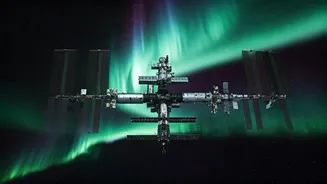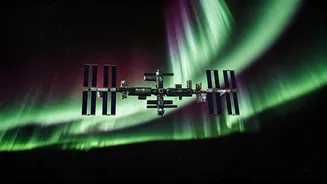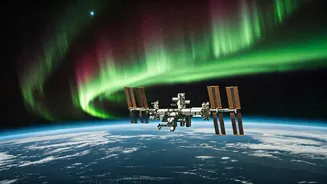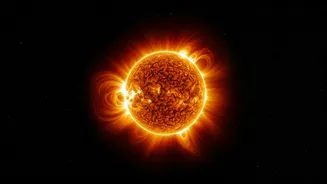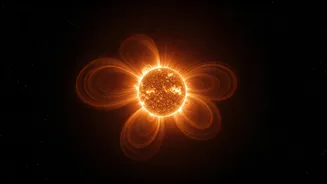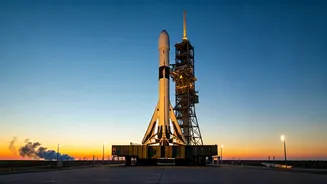Solar Storm's Fury
The recent solar storm caused intense auroras and presented significant challenges to astronauts on the ISS. These solar storms are characterized by massive
ejections of energy from the sun, known as Coronal Mass Ejections (CMEs). These events unleash powerful bursts of radiation and charged particles into space. The increased radiation levels due to these solar events pose a hazard to both the astronauts and the sensitive equipment onboard the ISS. To mitigate this risk, astronauts are trained to take protective measures when a major solar storm is forecasted. This includes moving to shielded areas of the station to minimize exposure.
ISS Shielding Protocol
When a severe solar storm is predicted, the ISS crew members are instructed to move into areas of the station where the shielding is at its thickest. This is usually within the most protected modules of the ISS, providing additional layers of protection. Furthermore, astronauts are provided with specific protocols to reduce radiation exposure during these events. The storm's duration also plays a critical role in the risk. Prolonged exposure to increased radiation can pose health risks. This makes following protective measures very crucial. The space station's design and operational procedures are regularly updated to account for potential dangers from solar events and ensure astronaut safety.
Understanding Solar Events
Solar storms are a natural phenomenon linked with the sun's activity cycle. The sun goes through periods of increased solar activity, and these are often accompanied by more frequent and intense solar flares and CMEs. Scientists monitor the sun closely, using satellites and ground-based telescopes to predict solar events. They analyze data to understand the magnitude and impact of these events, helping them forecast and issue warnings to space agencies and organizations. This allows for adequate preparation. Studying these events helps improve the understanding of the Sun's behavior and the space environment. It helps in the design of spacecraft and protective measures against solar radiation.
Impact on Technology
Besides risks to human health, solar storms can also disrupt various technologies. The high levels of radiation and electromagnetic disturbances from a solar event can impact communication systems. Satellite operations are also affected, and navigation systems might experience errors. The intensity of a solar storm can vary. Sometimes, the impact is minimal. However, more severe solar events can cause widespread problems. This includes everything from power grid failures to interruption of GPS services on Earth. Space agencies and commercial operators are constantly working to mitigate these risks by developing more resilient technologies and preparing for the effects of future storms.
Future Outlook
As the sun's activity continues to fluctuate, understanding and preparing for solar storms remains a crucial part of space operations. Continued research in this field is important. Scientists are always developing models to predict solar events with greater accuracy. This will allow for more effective warning systems. Spacecraft are also being designed with enhanced shielding and radiation protection to minimize risks to astronauts. With a greater understanding and technological advancements, future space missions can become safer and less vulnerable to these powerful events. Continuous monitoring and international cooperation are key to adapting to the challenges of the space environment.
